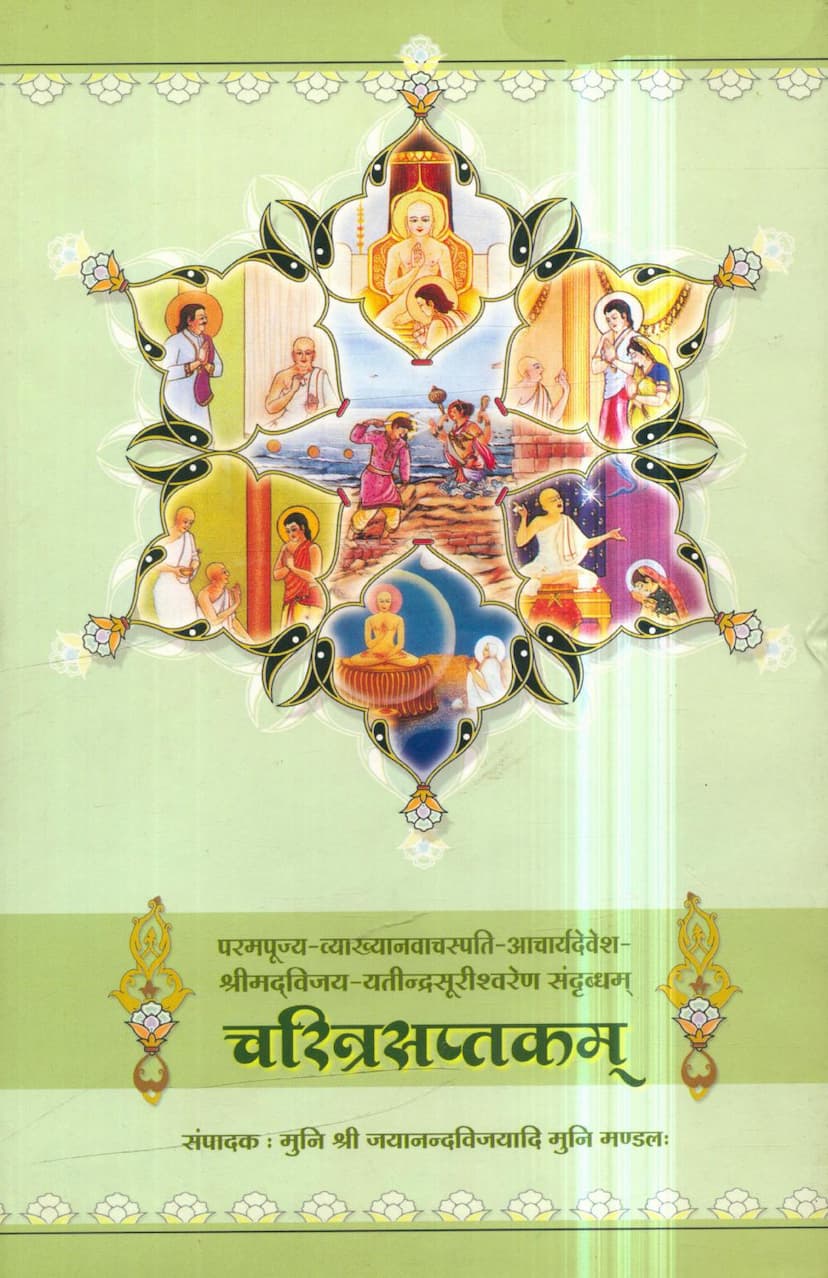Charitra Saptakam
Added to library: September 1, 2025

Summary
This document is the text of "Charitra Saptakam" (Seven Character Narratives) by Acharya Shri Jayananandvijay, published by Guru Ramchandra Prakashan Samiti. The book is a collection of seven Jain religious narratives, likely biographies or exemplary stories of significant figures within Jainism.
The initial pages of the document focus on the publication details, acknowledging various individuals, trusts, and groups who provided financial support and patronage for the printing and distribution of the book. This includes a long list of names, indicating a wide base of support for Jain literature and religious endeavors. The publisher is identified as Guru Shri Ramchandra Prakashan Samiti from Bhinmal, Rajasthan.
The main body of the text comprises seven distinct narratives, each seemingly a separate "charitra" or life story. Based on the page headings, these are:
-
Shri Ratnasar Kumar Charitra: This narrative appears to be the first and most extensive in the provided excerpt. It details the story of Ratnasar Kumar, focusing on themes of contentment, generosity, and righteous conduct. The text delves into his moral development, his interactions with wise figures, and the consequences of his choices, highlighting the importance of ethical living in Jain philosophy. It includes detailed descriptions of his renunciation of worldly pleasures and his spiritual journey.
-
Shri Aghat Kumar Charitra: The second narrative focuses on the story of Aghat Kumar. The excerpt mentions the concept of "punya-phaladarshak" (revealing the fruits of good deeds), suggesting a focus on the karmic consequences of actions and the rewards of virtuous living.
-
Shri Jagadusha Charitra: This appears to be a substantial narrative about Jagadusha, a prominent Jain figure known for his immense wealth and philanthropic activities. The text elaborates on his historical context, his conversion to Jainism, and his significant contributions to the faith, including the construction of numerous temples and the establishment of charitable institutions. It also touches upon the historical background of Gujarat and its rulers during his time. The narrative emphasizes the power of good deeds and devotion in achieving spiritual and material prosperity.
-
Shri Kayavanna Charitra: The fourth narrative is about Kayavanna. The excerpt focuses on the story of Kayavanna, highlighting his adherence to righteous principles, his previous births, and the karmic influences shaping his life. It touches upon themes of virtue, spiritual discipline, and the influence of past actions on present circumstances.
-
Shri Champakmala Charitra: This narrative centers on Champakmala. The excerpt details the story of Champakmala, who is portrayed as a woman of exceptional virtue and intelligence. It explores her marital life, her steadfast adherence to chastity and righteousness, and her ability to overcome challenges through her strong moral character. The story seems to emphasize the power of a virtuous woman and her influence on others, even in difficult situations.
-
Shri Brihadvidvadgoshthi: This appears to be a discussion or discourse among learned individuals rather than a biographical narrative. The excerpt presents a philosophical debate between different scholars (like Dhanpal Pandit) on various topics, possibly touching upon the nature of virtue, vice, and the human condition, using analogies from the animal kingdom to illustrate their points.
-
Shri Haribal Dhivar Charitra: The final narrative in the excerpt is about Haribal Dhivar. This story seems to focus on the theme of devotion and adherence to vows, even in the face of adversity. The narrative highlights the transformative power of sincere practice and the grace of divine intervention in overcoming challenges.
Overall, "Charitra Saptakam" appears to be a rich repository of Jain teachings and ethical guidance, presented through the lives and experiences of exemplary individuals. The narratives likely aim to inspire readers to cultivate virtues like contentment, truthfulness, non-violence, and devotion, thereby guiding them towards spiritual liberation. The detailed acknowledgments at the beginning suggest the book is a labor of love and dedication within the Jain community.